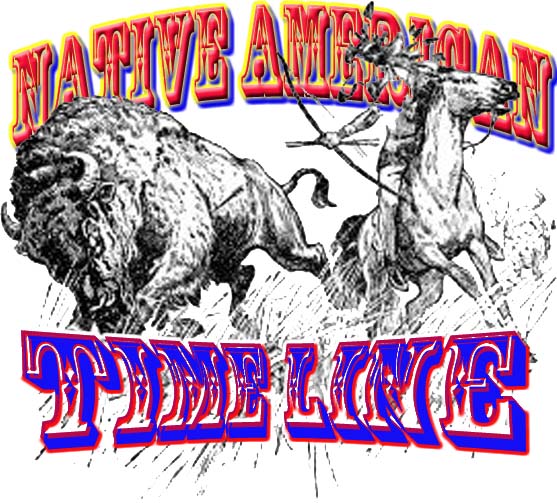900’s
Native American peoples first contact with Europeans were from Norway when they explored and settled areas of North America.
1492
Christopher Columbus sails from Spain to the new world with three small ships, the Pinta, the Nina, and the Santa Maria and lands on an island in the Bahamas, and he claims it for Spain.
1513
Juan Ponce de Leon fought with the Calusa Indians while exploring the Gulf Coast of Florida he captured four warriors.
1519
Hernan Cortes invades Mexico, completing his conquest of the Aztec empire in 1521 and establishes the colony of New Spain.
1524
The first kidnapping in America took place when Indian child was taken by Italian explorers to France.
1528
Panfilo de Narvaez claimed Tampa Bay, Florida for Spain but only four men survived the shipwreck on Galveston Island, and they were taken as slaves by the Native Americans.
1534
After living six years among the Indians of the Texas coast, Cabeza de Vaca and three fellow survivors began their travels across Texas and the Southwest into northern Mexico.
1536
Cabeza de Vaca and his companions meet a band of Spanish slave hunters near Culiacan on the Mexican west coast and make their way to Mexico City, where their adventure sparks interest in the mysterious lands to the north.
1538
Fray Marcos de Niza, a Franciscan friar, is sent to explore the lands north of Mexico, guided by Esteban, the African-American who had accompanied Cabeza de Vaca.
1539
Hernando De Soto lands at Tampa Bay, Florida and begins an expedition across the southeast.
The Napituca Massacre was the first European large-scale massacre on American soil, when Hernando De Soto executed 100 of Timucuan warriors after defeating them in battle.
1540
Francisco Vasquez de Coronado and 300 conquistadors invade the north and conquer the Zuni Pueblo of Hawikuh.
When Coronado refused to punish a Spaniard for rape, the Indians retaliate by stealing horses, but the thieves are captured and 200 Indians are burned at the stake.
1540
Hernando De Soto’s expedition was ambushed by Choctaw tribe in Alabama who killed their livestock and 200 Spaniards. The remaining Spaniards then burned down the Mabila compound, killing some 2,500 people who were inside.
1540
The first war between Europeans and Native Americans was the Tiguex War fought by the army of Francisco Vasquez de Colonado against 12 pueblos of Tiwa Indians.
1541
Faced with an incipient uprising, Francisco Vasquez de Coronado ordered an attack on the Moho Pueblo, a center of Indian resistance. His men were repulsed when they tried to scale the walls, so they settled in for a siege.
When the Moho tried to slip away, the Spaniards killed more than 200 men, women and children.
1542
Under pressure from religious leaders, especially the Dominican friar Bartolome de Las Casas, Spanish Emperor Carlos V attempted to impose “New Laws” on the Spanish colonies, ending the encomienda system that gave settlers the right to Indian slave labor.
1546
The “New Laws” barring Indian enslavement were repealed at the insistence of New World colonists, who developed a society and economy dependent on slave labor.
1552
Bartolome de Las Casa, the first priest ordained in the Western hemisphere and chief architect of the now-defunct “New Laws” against Indian enslavement, published Brief Relations of the Destruction of the Indies, which provided many gruesome examples of the colonists’ treatment of Indians.
1598
Juan de Onate declared possession of Hopi land (in what is now northern Arizona) in the name of the Spanish crown. Four hundred years later, the Hopi have still never signed any treaty with any non-Indian nation.
Word count 587
>>to return to previous page – right click on back arrow <<



























